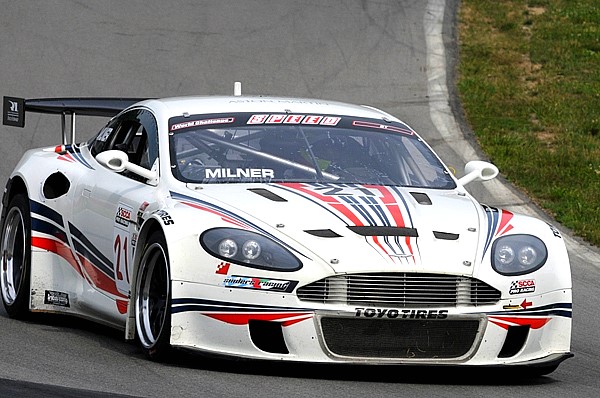RLR finds a new side business in racing
 |
| Aston Martin DBRS9 reworked by Rahal Letterman Racing |
At its essence, the end goal of motorsports is about making a car faster.
And while Rahal Letterman Racing has a myriad of experience in making open-wheel and sports cars go faster – as its 20 wins and 29 poles would attest to – its project to turn a back-of-the-pack Aston Martin DBRS9 into a fearsome speed machine was unlike any challenge it had ever faced.
In making a bold leap toward the burgeoning business of finding speed in high-powered race cars where no one else was able to, this weekend at the Mid-Ohio Sports Car Course RLR engineers and fabricators not only showed they were up to the task, they may have revolutionized the process as the DBR9 stormed to the front of the SPEED World Challenge grid, qualifying and finishing fourth with Tom Milner Jr. at the wheel.
“We have had a lot of success on many different levels of racing since we started this team in 1992," said RLR co-owner Bobby Rahal. “But to take a car like this that has been off the pace, even though some of the best speed shops in the country have tried to work on it, and to make it faster than it ever has been, is very satisfying to us and could add a new facet to our racing business at Rahal Letterman Racing."
The reformation of the DBRS9 came to RLR through car owner John Sinders, who campaigned the car in SCCA WC events in 2006. The car ran in five events, earning one top-five finish, but generally suffered at the hands of its rivals, being outpaced by nearly three seconds by the top cars in the field.
The process meant that nearly every part of the Aston Martin would be reformed, refitted or repositioned, from the engine to the undertray. Rahal Letterman Racing engineers discovered that SCCA rules would allow for a number of modifications that would yield a lower center of gravity and move a significant amount of weight to the rear of the car.
The movement of the weight off of the front of the car resulted in significantly greater traction, braking and handling, and allowed engineers to re-tune the spring, shock and bar settings to increase grip and lower lap times.
“The car was really fun to drive," Milner said. “It was responsive and powerful and was able to do just about anything we asked for it to do. Great grip, strong car, I hope I get a chance to drive it again!"
RLR fabricators created a number of new pieces in their Hilliard, Ohio shop, building a new exhaust system and a new carbon rear undertray, while modifications to the cross-members allowed the engine to be moved lower and further back in the car. Moving the engine is a formidable task in any case, but in order to move the massive DBRS9 powerplant RLR engineers had to create space for the engine to move to, where none existed in the previous configuration.
“Once we went through the SCCA World Challenge Rule Book and saw what was possible, we had a number of possibilities open to us as to how we could make the DBRS9 quicker," said RLR Technical Director Jay O’Connell. “Just in moving the engine, we had to move nearly everything in the front of the car and make a number of modifications just to create space. The guys at the shop put in a lot of hours and worked extremely hard in research and development, in fabricating new parts and maximizing the output of the car."
